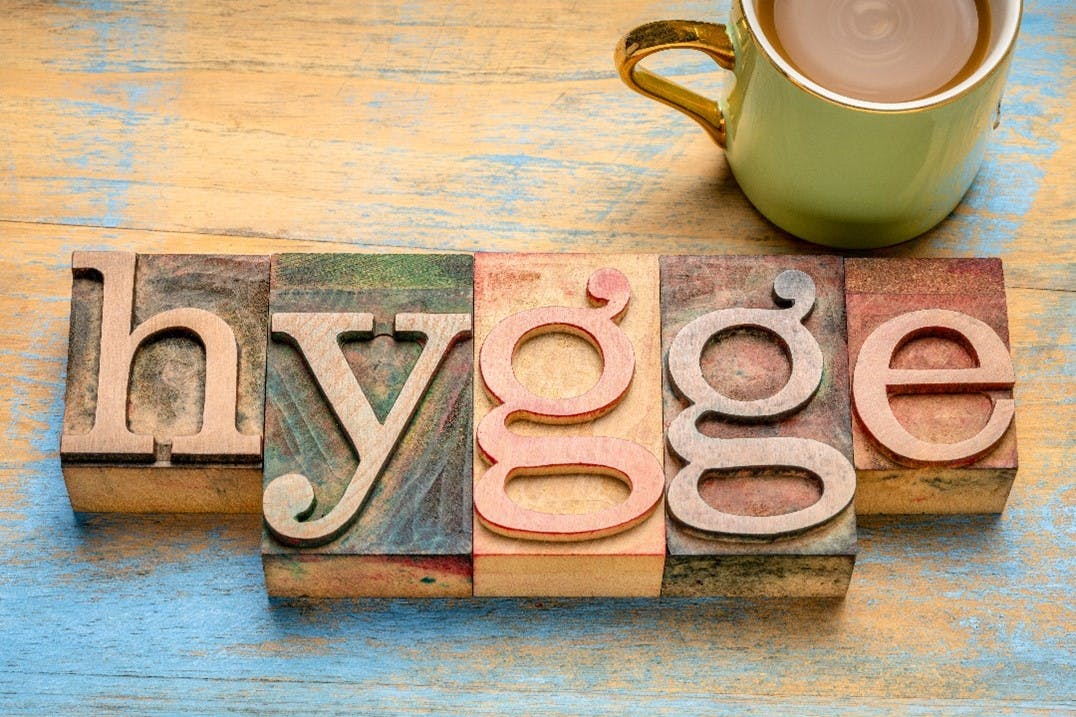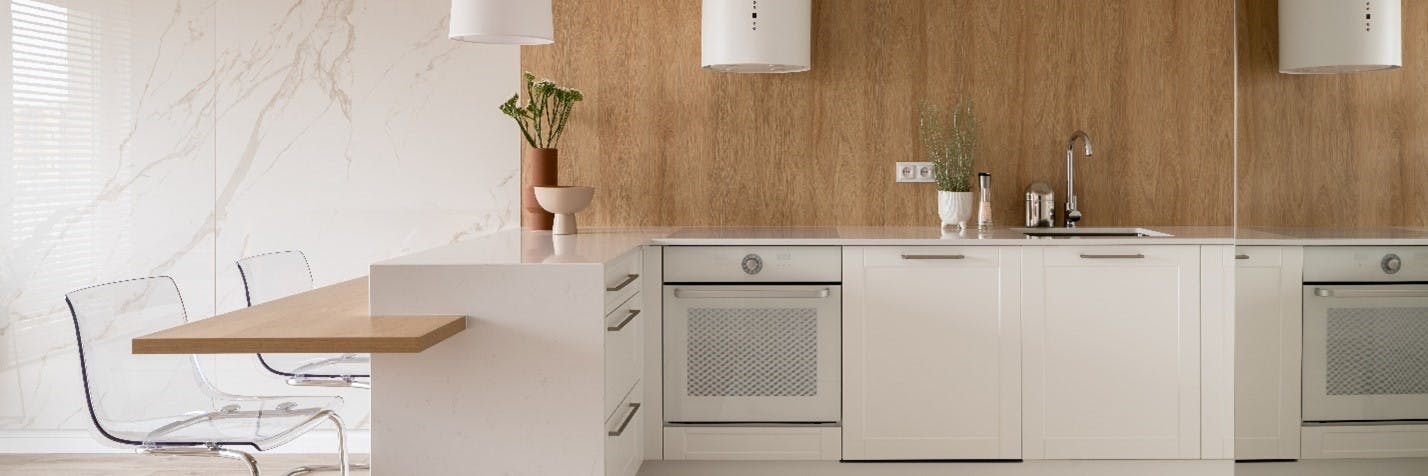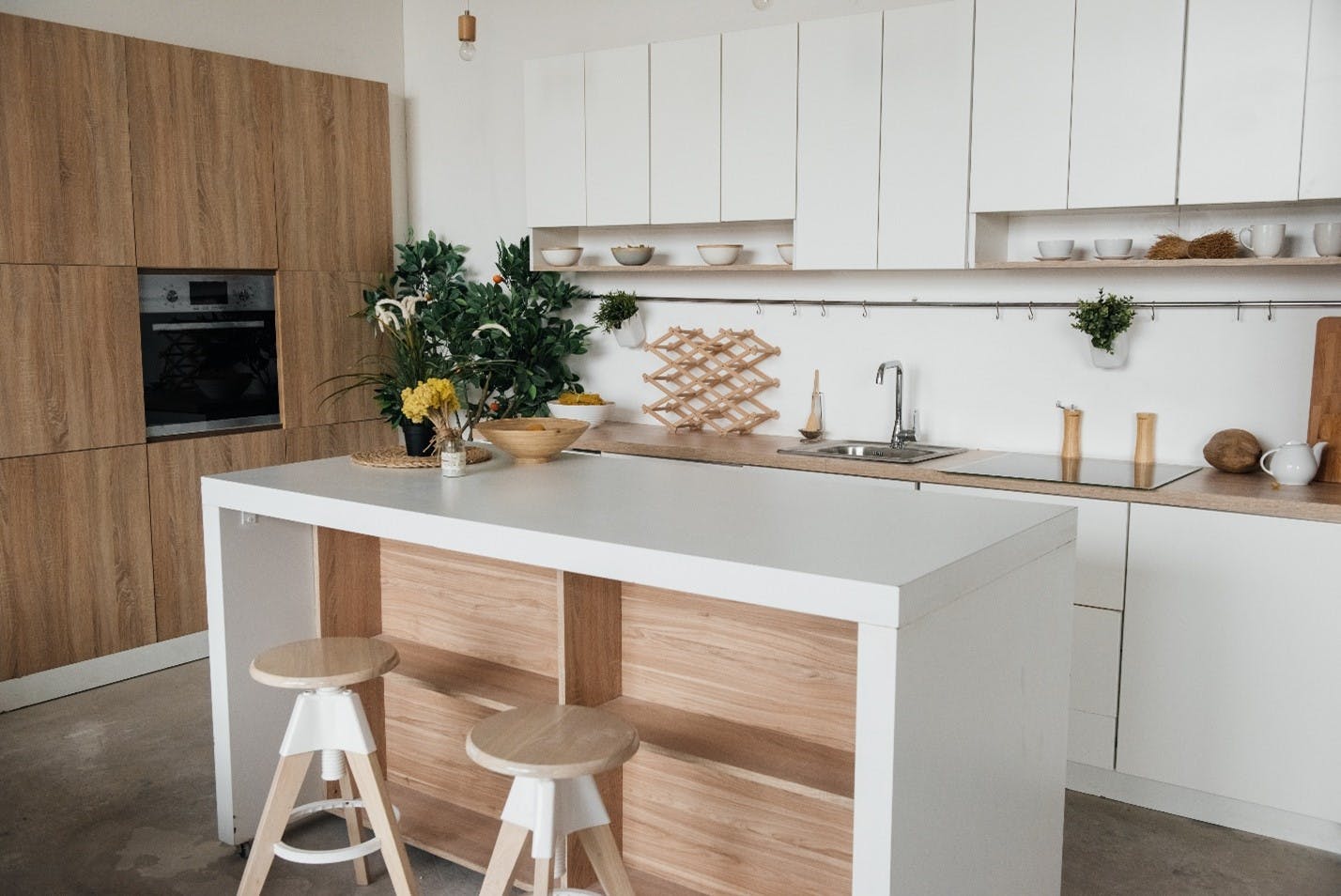Practical and cozy comfort are essential elements of Scandinavian kitchen design. With functional decorative objects and an emphasis on natural elements, Scandinavian design focuses on harmony with your environment, encompassing the idea of “less is more.”
Discover the essential components of Scandinavian kitchen design, a timeless, minimalist style that has been popular since the 1930s. Our kitchen specialists have shared their expertise to help you create the perfect Scandinavian kitchen design.
Hygge: The Foundation of Scandinavian Design

A Danish view of coziness during the long, dark winter months, Hygge (pronounced “hu-ga”) is the essence of Scandinavian design, emphasizing slowing down and spending time indoors with family and loved ones.
Hygge is a concept that promotes comfort, contentment, and internal well-being in the home. It is a design philosophy that advocates for creating a cozy and comfortable environment through well-thought-out elements. Hygge is not just about physical comfort but also about enjoying the company of loved ones and doing things that make you happy. It is a way of life that emphasizes the importance of a warm and welcoming home.
The History and Influence of Scandinavian Design
Following the Second World War when Scandinavian countries banded together (Denmark, Sweden, Norway, Finland, and Iceland), a new approach to design was also born in the 1950s: uncluttered and simple décor with an emphasis on coziness. This approach strongly influenced the midcentury modern style. The ever popular sofa bed was an early innovation of Scandinavian style, as a focus on innovative space-saving furniture.
Scandinavian design was directly influenced by life for Scandinavians and the strong need for practicality. Long winters necessitated a light and bright design to take advantage of the few hours of sunlight per day.
Minimalist and functional, this design aesthetic aimed to be accessible, affordable, and practical. Popular designers like Alvar Aalto, Arne Jacobsen, and Hans J. Wegner promoted and defined Scandinavian design on a global scale.
Scandinavian Design Principles

Clean-lined furniture
For functional furniture, choose simplicity over ornamental or flashy pieces.
Tables, chairs, etc. are often made with warm wood tones for a bright and airy space.
Neutral color tones and materials
Focus on shades of white, grey, and other neutral tones.
Consider earthy colors like navy blue and forest green to reflect the focus on natural elements.
Incorporate organic and natural textures like wool and cozy knits to add warmth to your kitchen.
Focus on nature and greenery
Incorporate greenery, plants, and an indoor herb garden for a subtle organic touch.
Use wood tones for furniture and flooring. A large, wooden table with comfortable seating becomes the perfect family gathering space.
Cabinet style and color
Try flat panel cabinets or slim shaker for a simple, clean-lined design.
All-natural wood and white are both popular colors for a Scandinavian kitchen.
Natural light
Scandinavian countries prioritize natural light during the day and candlelight at night for a cozy atmosphere. Leave kitchen windows unadorned for maximum natural light and peace while cooking.
Minimalism
Simple and functional décor
Embrace clean lines and practical design
Clean, uncluttered spaces
What to Keep in Mind When Designing a Scandinavian Kitchen

A place for everything and everything in its place – this is the best way to avoid clutter!
Incorporate open and floating shelving.
Light and natural wood toned flooring.
Keep backsplashes light and white to allow other décor to shine.
Don’t forget the plants! Scandinavian culture is rooted in its love of nature, so bringing in natural elements is key. If you don’t want to add too many plants, botanical wallpaper is an excellent alternative.
Add rugs, soft cushions, and other similar elements to differentiate Scandinavian from minimalist style.
Form follows function – everything within the design has to serve a purpose.
Beautiful lighting options like a unique floor lamp or hanging lights will brighten up the mood and the space.
Use calming and relaxing colors such as neutral tones as well as a range of muted pastel colors like light blues, greens, and pinks.
Scandinavian design is all about carefully crafted and functional design elements. It emphasizes creating a warm and cozy atmosphere while incorporating bright and cheerful vibes. To achieve the perfect Scandinavian design, it is important to incorporate key elements such as neutral tones, greenery, simple furniture, and minimalist décor.
Reach out to your local Fabuwood dealer to start designing your Scandinavian kitchen using these essential design principles.
FAQS
What do I need to know about Scandinavian design? This design is the epitome of simplicity, with a focus on both form and function. Think minimal, clean, warm, and cozy.
What’s an essential principle of Scandinavian design? The go-to color combo is a shade of white and all-natural wood tones for the flooring and furniture.
What materials are used in Scandinavian design? Think organic and natural elements like wood, wool, and greenery.
What is the difference between Scandinavian design and minimalism? Minimalism usually includes stainless steel elements and chrome, while Scandinavian focuses on organic materials and warmth. The key difference between the two is the type of materials used, which alters the entire aesthetic.



